'Hobbs & Shaw' director David Leitch breaks down action-packed London car chase scene
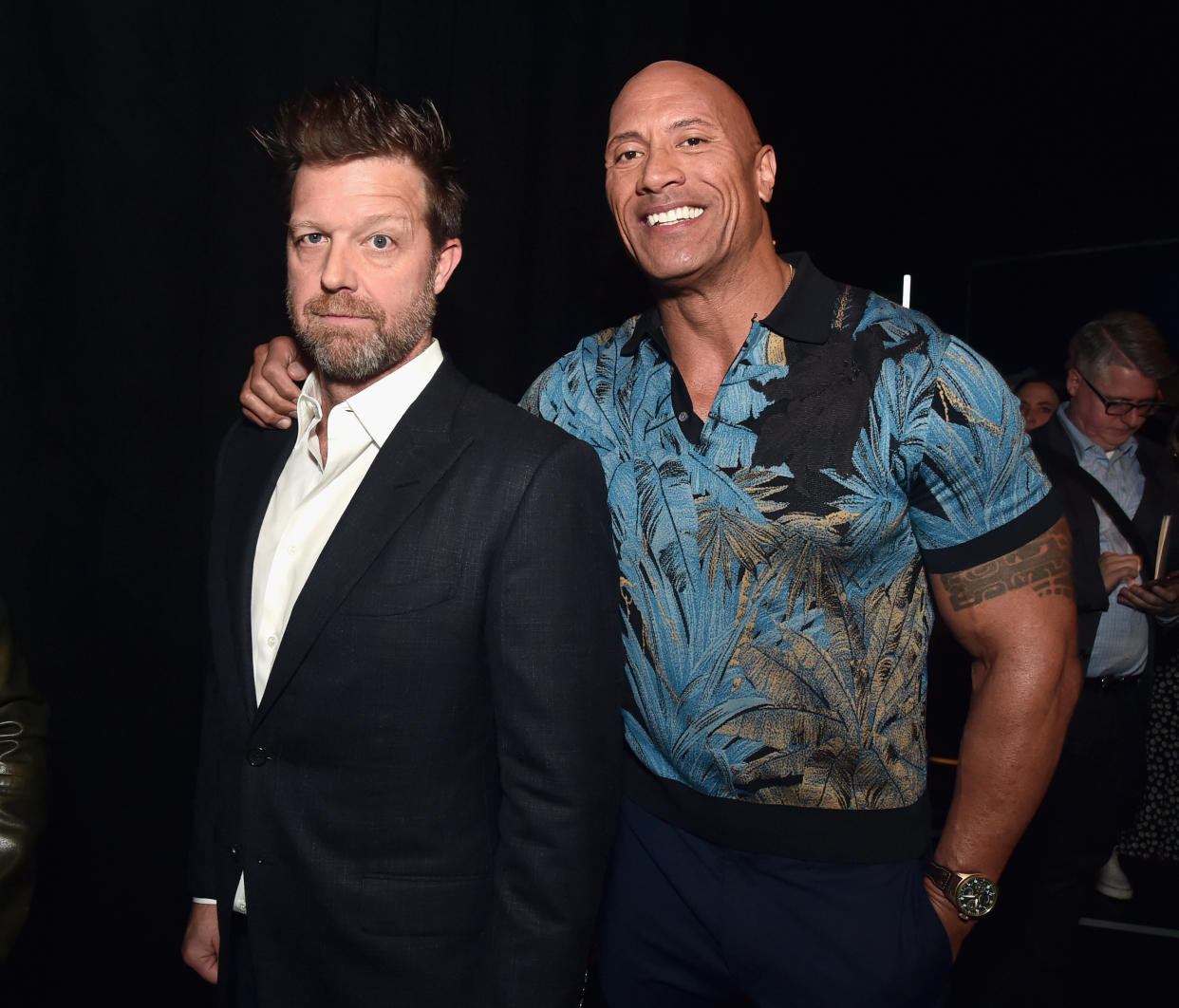
Hobbs & Shaw might be a spin-off focusing on Dwayne Johnson and Jason Statham’s title heroes but it’s still very much a Fast & Furious movie.
That’s why David Leitch ensured that the DNA of what makes audiences keep returning to the cinema for this franchise, was still very much part of the make-up of his movie.
Leitch, who most recently directed Ryan Reynolds in Deadpool 2, sat down with Yahoo Movies UK to discuss how he went about creating one of the early car chase sequences in Hobbs & Shaw.
Taking to Shaw’s McLaren 720S, the pair, and his sister Hattie (Vanessa Kirby) try to escape the clutches of Idris Elba’s super-powered villain Brixton on a pretty special motorcycle.
Read more: Fast & Furious writer says franchise can go to space
Here, in his own words, Leitch breaks down exactly what went into making this high-octane sequence through London.
A lot of early mornings are involved
In a movie this size, the logistics are always pretty daunting. And then shooting in London on top of that, it's crazy. To lock off as many streets as we need we do it in the mornings and weekends as part of our shoot week and had Tuesdays off - that's when you would get those types of locations.
We actually got a big map of the city to work out our route and in order to lock down streets and get the police here, here and here because can't have any pedestrians. We're driven the cars at 80 miles an hour down the street! And so it becomes a massive puzzle of people, we have a crew of 300, so the question is: where do you put those people? You’ve got to park your truck somewhere that’s not in the shot, work out where our lockdowns are. It's like a massive parade.
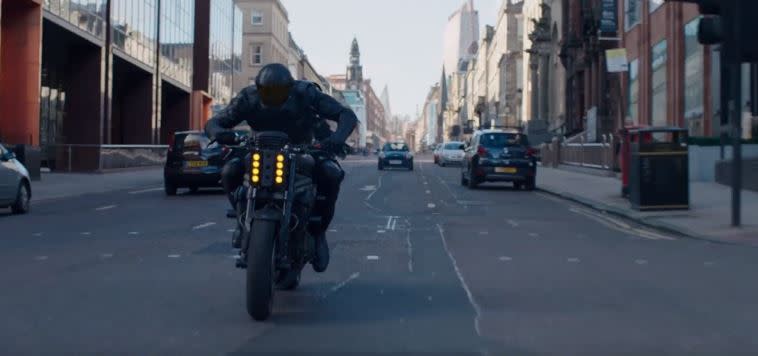
The chase isn’t just filmed in the English capital
We also took that sequence to Glasgow and doubled it for London for a big part of it. We had Simon Crane as a second unit director who did some work in Glasgow as well. So overall, that sequence had probably eight days of photography in between first unit and second unit, London, Glasgow, and we even did some additional photography in LA on the (Universal) back lot to double for London as well.
A lot of stunt drivers are used
On any given day, we probably had 20 stunt drivers with another 20 to 30 background drivers. So the stunt drivers are generally creating the traffic pattern around the action and then the background drivers are in their cars. They’re background artists and they bring their cars for the day and you dress them in the background.
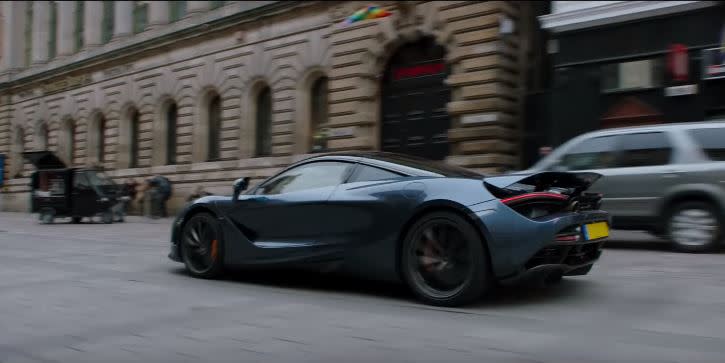
So there's a lot of actual drivers on camera, then when we get to editorial, we look at shots that might be a little thin and we might put another car there in, or a few, with visual effects which can help enhance the scene as well, but the idea is to get as much of it on camera as possible.
Read more: Why The Rock had to be 'CGI-ed' into a supercar
Brixton’s bike was, of course, not real
In the spirit of Fast & Furious, of always trying to push boundaries, we wanted to make sure that Brixton had the trickiest bike out there. And the idea of sliding under the truck was actually a sort of an homage to a gag that they've done in the past but instead having Brixton do it in a high tech way. So we came up with this idea for the bike to transform and we had to sort of deliver it to the CG artists to figure out, mechanically, how it could work.
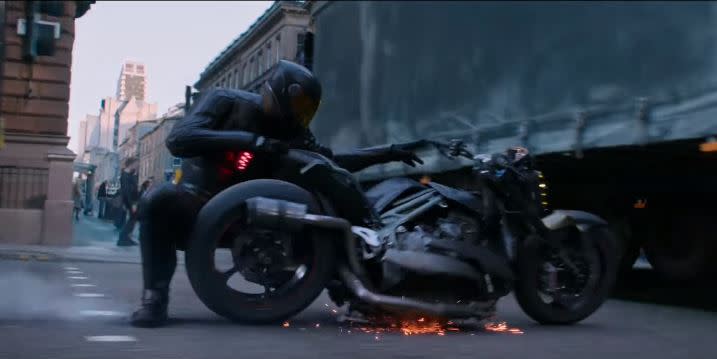
They broke down the pieces of the bike, they created hinges and CG where the hinges would be and then they sent models back to us. So it was actually some great artistry from the visual effects team.
Still, he didn’t want these scenes to be overtaken by CGI
I think where those big set pieces flourishes is when you have practical stunts meeting CGI, in a sort of holy union. Even at the end of the movie, there's a lot of practical stuff. The helicopter is real in 90% of the shots, only the chain is CGI.
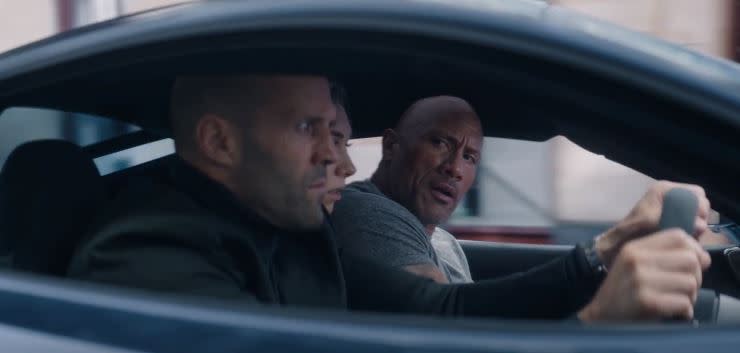
What this does is it challenges the visual effects artists to match the real photography, whereas a lot of times in the CG sequences, you don't get a practical element at all. So granted, some of our physics is over the top but the fact that there's so many pieces of real photography grounded in those action bits, and all the lead ups and exits are all real, that it helps it to look more believable.
Fast & Furious Presents: Hobbs & Shaw opens Thursday, 1 August

 Yahoo Movies
Yahoo Movies 
